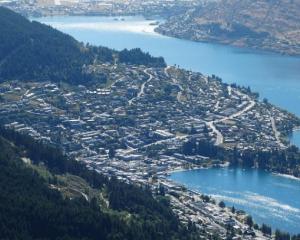The Iron Hill Timber Treatment Plant, at the corner of Aubrey and Outlet Rds, used boron anti-sap-stain chemicals and milled and stored copper, chrome and arsenate-treated timber until it closed in about 2007.
Northlake developer Michaela Meehan has applied to the Queenstown Lakes District Council for resource consent to remove up to 6000cu m of contaminated soil and deposit it in a nearby ‘‘encapsulation cell''.
Consent has been granted by the Otago Regional Council.
A report prepared by Davis Consulting Group Ltd says soil samples were taken from 97 locations where there had been two timber mill buildings, a timber treatment spray tunnel, a drip area, a boron-treated timber storage area and other storage areas.
The area of the plant was within the yet-to-be-developed residential lots 48 to 54 and 61 to 64 inclusive.
The results at some sites showed the soil quality was not acceptable for residential development.
The contaminants found were carbendazim, copper, chromium, boron and arsenic.
‘‘All contaminants were found below [national environmental standards] guidelines for the protection of human health with the exception of arsenic,'' the report said.
It proposed excavating soil with arsenic concentrations between 25mg per kg and 134mg per kg.
‘‘The soils will be excavated to a depth of 0.5m below ground level, although this will be extended in isolated locations where concentrations exceed 25mg per kg at 0.5m,'' the report said.
‘‘The total volume of arsenic-impacted soil proposed for excavation has been estimated at 2750 cubic metres,'' the report said.
The contaminated soil would be disposed of in the encapsulation cell on a neighbouring site identified as road reserve.
The 7m-deep cell would be capable of holding up to 6000cu m of contaminated soil.
The soil would be trucked to the cell and covered with high-density polyethylene liner and 1.2m of soil.
The report considered the risk of the contaminated soil interacting with groundwater was ‘‘very low''.
The land lies over the Wanaka basin Cardrona gravel aquifer and there is groundwater 15m below ground level.
Two bores were found to be in the vicinity of the site - one domestic bore 500m away - but neither lay in the ‘‘down-gradient groundwater flow direction''.
The nearest surface water is the Clutha River about 600m to the northeast.
It was not considered economically viable to dispose of the soil in the Gibbston Valley's Victoria Flats landfill.
The greatest risk to health during the move was considered to be from inhaling dust.
‘‘This will be mitigated by the work being undertaken during calm days and by spraying the contaminated soil with water.
‘‘All earthworks should require cabins of the excavators and trucks to be closed.''
The report said exposure to the soil would be for ‘‘a short duration over a period of days''.
It concluded that provided the mitigation measures were complied with, ‘‘the effects to contractors undertaking the work is expected to be low''.
The work would take up to three months to complete.
●Northlake Investments Ltd is also preparing to begin earthworks in part of its 108ha subdivision of the 220ha, 1500-house Northlake Special Zone, in Outlet Rd.
The company is seeking resource consent for 19ha of the land in the south-eastern corner of the subdivision.
The earthworks, as described in the application, is designed to ‘‘re-contour and regularise the shape of the land'', in particular a ‘‘reasonably steep'' terrace.












